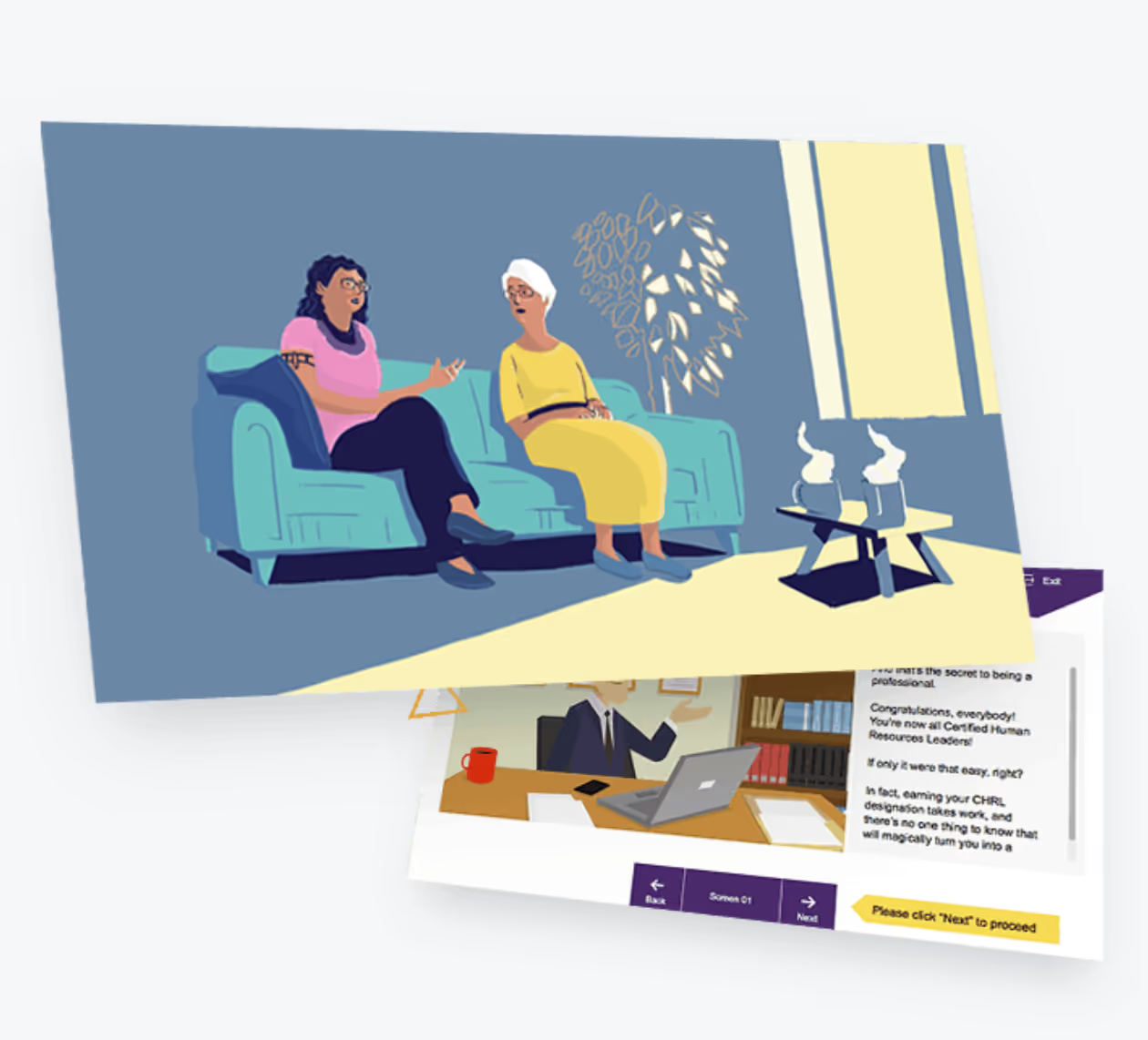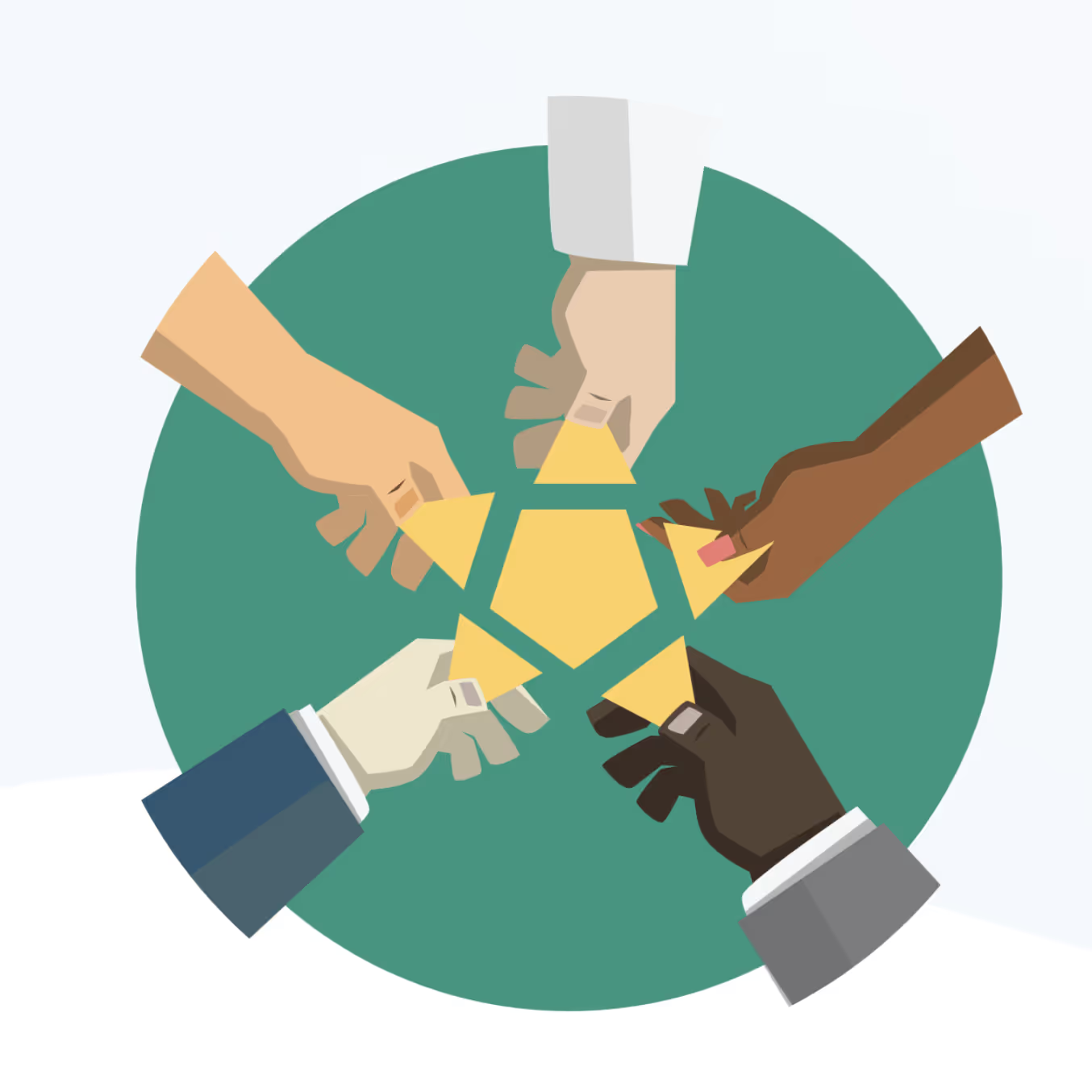BTS is digital, every day
Digital capabilities, human touch

It’s about people, not technology.
Our digitally-enabled programs accelerate learning, spark change, personalize virtual engagements, and improve business results for our clients and their people.
We focus on capabilities that extend workshops and learning journeys to reinforce knowledge and enable practice, expand the reach of learning programs allowing them to be self-paced, and cascade learning and change to the full organization utilizing leader-led modules delivered in the flow of work.
We're building the digital learning experience of
tomorrow.
Since 2001, we've been at the forefront of defining what learning can be in the digital world. Our mission is to create experiences that inspire, engage, transform, and most importantly deliver results. Adding SwissVBS to the BTS team enhanced our ability to be a creative team focused on delivering results. We're learning experts. We're storytellers. We're creative thinkers. We're problem solvers.

Bite-sized, single-concept learning
BTS's rapid learning is a robust but focused library, targeting pivotal behaviors in leadership and sales. Novel micro-training concept in which line leaders bring a team together to engage in a module, discuss and practice.

Get Togethers to engage every team in the organization
Ultimately to drive real change, every leader needs to own and drive new ways of working with their teams all the way down to the front lines. Our pre-packaged ‘Get Togethers’ are scalable, flexible, and easy ways to ignite team momentum to learn, align and change. These pre-designed experiences built to run in the flow of work and be highly interactive, engaging, experiential, and meaningful. Analytics and reporting is embedded and provides you with deep insights from all teams without having to burden the organization with more surveys.
Understanding Project Management increases ability to lead & follow project management processes
The new Understanding Project Management (UPM) by BTS is a Web-based learning resource that helps experienced and aspiring project managers understand the five process groups of best practice project management. The self-paced 4-hour program can be taken as pre-work to help users prepare for more advanced workshops or as a standalone project management primer to better understand fundamental project management. It can also be used as an ongoing reference tool to reinforce concepts and prior learning.

Winning in Business Simulation
Winning in Business is an industry-leading digital simulation that will provide your people with the skills they need to perform at a higher level and help your organization to gain a competitive edge. These multi-round, team-based or self-paced, learning experiences are built to help participants practice making business decisions via real-life business situations.

Know-the-business
Our Know the Business (KTB) suite drives business acumen by allowing your people to practice using basic financial statements and key ratios to assess company performance. The multi-language KTB is a mobile-ready, self-paced experience that allows participants to learn, study, and test their financial acumen knowledge. Combining video-based learning bursts, interactive tools, quizzes, and a simulation, the KTB enables all learners to make sound business decisions that drive bottom-line results.

iLead Challenges
iLead Challenges help companies accelerate the development of great leaders. The simulation provides a series of scenario-based video challenges featuring important leadership moments to deliver a learning experience that reinforces the critical skills necessary for effective leadership. Participants will engage in cinematic storylines to address key leadership topics and develop their leadership skills – essential for optimal execution and delivering long-term business results. Each iLead is a 20- to 30-minute interactive, multi-media experience and is available in many languages

Digital is an enabler. It powers our in-person and virtual simulations as well as gives people a voice during larger conferences
Facilitated workshops
Facilitated classroom work that goes deep, fast with engaging activities along the way so your team can put in the powerful emotional work. Available in-person, virtually, and on-demand.
Events & Offsites
Alignment simulations and experiences for your leaders and teams that crowdsource the wisdom of the group with mind-blowing ideation.
Rapid Learning
π
A robust but focused library of bite-sized single-concept learning targeting pivotal behaviors in leadership and sales.
Virtual Simulations
Teams run a simulation of your business over multiple rounds combining facilitated sessions with asynchronous teamwork in breakouts.
Self-directed Simulations
Experience simulated worlds, make decisions and see the impact on your business, leadership, sales, and innovation goals.
Leader-led team get togethers
Short, impactful digital experiences designed to be easy to run and accessible when leaders need them in the flow of work.
Custom digital learning
Digital learning strategy, microlearning, course correction, learning reinforcement, and next-gen digital learning campaigns.
Blended & Digital Journeys
Blended journeys include virtual workshops, self-directed learning, and results assurance.
Personalized coaching & practice
With 1-on-1 coaching, pod-coaching, learning circles, and practice-with-an-expert, we’ve got your coaching needs covered.
Assessments
Whether virtual, digital, or in-person, our moments-based assessments allow you to understand your people better based on real situations from your business.
Virtual & Digital Client Advisory
Advice, capabilities, and solutions from best practices for virtual, digital, or hybrid, to collaborative program or curriculum review.
Digital Toolkit
We believe meaningful results are achieved through a journey of learning, development, and execution. These insights allow us to create industry-leading products and experiences that can revolutionize your leadership
Latest News

Each business revolution has reshaped not only how businesses operate, but how they organize themselves and empower their people. From the industrial age to the information era, and now into the age of artificial intelligence, technology has always brought with it a reconfiguration of authority, capability, and judgment.
In the 19th century, industrialization centralized work and knowledge. The factory system required hierarchical structures where strategy, information, and decision-making were concentrated at the top. Managers at the apex made tradeoffs for the greater good of the enterprise because they were the only ones with access to the full picture.
Then came the information economy. With it came the distribution of information and a need for more agile, team-based structures. Cross-functional collaboration and customer proximity became competitive necessities. Organizations flattened, experimented with matrix models, and pushed decision-making closer to where problems were being solved. What had once been the purview of a select few, judgment, strategic tradeoffs, and insight became expected competencies for managers and team leads across the enterprise.
Now, AI is changing the game again. But this time, it’s not just about access to data. It’s about access to intelligence.
Generative AI democratizes access not only to information, but to intelligent output. That shifts the burden for humans from producing insights to evaluating them. Judgment, which was long the domain of a few executives, must now become a baseline competency for the many across the organization.
But here’s the paradox: while AI extends our capacity for intelligence, discernment, the human ability to weigh context, values, and consequence, is still best left in the hands of human leaders. As organizations begin to automate early-career work, they may inadvertently erase the very pathways and opportunities by which judgment was built.
Why judgment matters more than ever
Deloitte’s 2023 Human Capital Trends survey found that 85% of leaders believe independent decision-making is more important than ever, but only 26% say they’re ready to support it. That shortfall threatens to neutralize the very productivity gains AI promises.
If employees can’t question, challenge, or contextualize AI’s output, then intelligent tools become dangerous shortcuts. The organization stalls, not from a lack of answers, but from a lack of sense-making.
What organizations must do
To stay competitive, organizations must shift from simply adopting AI to designing AI-aware ways of working:
- Build new learning paths for judgment development. As AI replaces easily systematized tasks, companies must replace lost learning experiences with mentorship, simulations, and intentional development planning.
- Design workflows that require human input. Treat AI as a co-pilot, not an autopilot. Embed review checkpoints and tradeoff discussions. Just as innovation processes have stage gates, so should AI analyses.
- Make judgment measurable. Assess and develop decision-making under ambiguity from entry-level roles onward. Research shows the best learning strategy for this is high-fidelity simulations.
- Start earlier. Leadership development must begin far earlier in career paths, because judgment, not just knowledge, is the new differentiator.
What’s emerging is not just a flatter hierarchy, but a more distributed sense of judgment responsibility. To thrive, organizations must prepare their people not to outthink AI, but to out-judge it.

Work today is too complex for individuals to succeed in isolation, and almost every critical decision, innovation, or transformation depends on teams working effectively together. To understand what actually makes those teams work, BTS analyzed 6,702 leader coaching goals and 3,211 leadership team survey responses using our High-Performing Team Assessment model, comparing what leaders say they are working on with what teams say is getting in their way.

At BTS, we’re constantly challenging ourselves to innovate at speed. And right now, it feels like we’re standing at the edge of something massive. The energy? Electric. The velocity? Unprecedented. For many of us, the current pace feels a lot like the early days of the pandemic: disorienting, high-stakes, and somehow exhilarating. And honestly—it should feel that way. Our teams have been tinkering with AI, specifically LLMs, for the past 2.5 years and it has really been in the last eight months that I can see the profound impact it is going to have for our clients, for our services and our operating model.
The opportunity isn’t about the technology. The world has it and it’s getting better by the minute. The issue is people and people’s readiness to adopt it and be re-tooled and re-skilled. It’s about leadership. AI is deeply personal, it’s surgical. In fact, that’s its genius. So, getting full scale adoption of AI, re-tooling everyone in the company by workflow, so that they can invent new services, unlock new customer value, unlock new levels of productivity, even use it for a better life, is the current race. The central question I’ve been wrestling with, alongside our clients and our own teams, is this:
What does AI actually mean for leadership and culture?
And the answer is clearer by the day: AI isn’t just a new toolset. It’s a new mindset. It demands that we rethink how we lead, how we learn, and how we build thriving organizations that can compete, adapt, and grow.
The productivity paradox revisited
Let’s start with the elephant in the boardroom. There’s been a lot of buzz around AI and its promises. But many leaders have quietly wondered: Will any of this actually move the needle? A year ago, we were asking the same thing. We had licenses. We had curiosity. We had early experiments. But the results were modest, a 1% productivity gain here or there. But by April, we were seeing:
- 30–80% productivity gains in software engineering
- 9–12% gains in consulting teams
- 5%-20% improvements in client success and operations
Just as importantly, the innovation unlock and creativity across our platforms due to vibe coding along with new simulation layers, is leading to new value streams for our clients. This isn’t theoretical. It’s not hype. It’s real. The difference? Adoption, ownership, and a shift in how we lead in order to energize the AI innovation within our teams. The challenge now isn’t whether AI creates value. It’s how to unlock and scale that value across teams, geographies, and business units—and do it fast.
Two Superpowers of the Agentic AI Era
In working with leaders across industries, I’ve come to believe in two superpowers (there are more as well) that will unlock the potential of this AI era: Jazz Leadership and a Simulation Culture.
1. Jazz Leadership
Forget the orchestra (although personally I am a big fan.) The successful team cultures that are innovating with AI feel more like jazz. In jazz, there’s no conductor. There’s no fixed sheet music. There are core bars and then musicians make up music on the spot based on each other’s creativity, building off of each other’s trials, riffs and mistakes, build something extraordinary together. This is how experimenting with AI today, in the flow of work, feels like.
For each activity across a workflow, how can new AI prompts, agents, and GPTs make it better, codify high performance, drive speed and quality simultaneously? How can we try something totally different and still get the job done? How might we re-invent how we work? That’s how high-performing teams operate in the AI era. The world is moving too fast for command-and-control leadership, a perfect sheet of music with one leader who is interpreting the sheet music and directing. What we need instead is improvisation, trust, shared authorship, courage and a playful spirit because there are just as many fails as breakthroughs.Jazz leadership is about creating the conditions where:
- Ideas can come from anywhere
- People see tinkering and testing as key to survival and AI failures mean your team is at the edge of what’s possible for your services and ways of working
- Leaders say, “I don’t have all the answers, but I’ll go first, with you”
- People feel “I’m behind relative to my peers in the company” and the company sees this as a good sign because the pace of learning with AI means higher chance of success in the new era
At BTS, we recently promoted five new partners who embody this mindset. They weren’t the most traditional leaders. But they were the most generative. They coached others. They experimented and are constantly re-tooling themselves and others. They inspired movement. They are keeping us ahead, keeping our clients ahead and driving our re-invention. Jazz leaders make teams better, not by directing every note—but by setting the stage for breakthroughs. It is similar to the agile movement, similar to how it felt in Covid as companies had to reinvent themselves. It’s entrepreneurial, chaotic and fun.
2. Simulation Culture
The ability to simulate is a super-power in this next agentic, AI era. Simulation has always been part of creating organizational agility, high performance and leadership excellence. But AI and high-performance computing have transformed it into something bigger, faster, and infinitely more powerful. It means that building a simulation culture is within all of our grasp, if we tap its power.Today, companies simulate:
- Strategic alternatives - from market impact all they way to detailed frontline execution
- New business, new markets and operating models
- Major capital deployment e.g. build a digital twin of a factory before breaking ground
- Initiative implementation
- Workflows current and future
- Jobs to assess for talent and critical role readiness
- Customer conversations and sales enablement motions
With a simulation culture, where you regularly engage in scenario planning and expect preparation and practice as a way of working, billions in capital is saved, cross-functional teams are strengthened, high performance gets institutionalized, win rates increase, earnings and cash flow improves.
Where to get started
Below are a few examples of what leading organizations are doing. Consider testing these in your own organization:
- Conversational AI bot platforms used to scale performance expectations and the company’s unique culture.
- Agentic simulations built into tools so people can prepare and practice with 100% perfect context and not a wasted moment.
- Digital twins of the job created so that certifications and hiring decisions are valid.
- Micro-simulations spun up in hours to align 50,000 people to a shift in the market or a new operational practice.
Final Thoughts
- Lead like a jazz musician. Embrace improvisation, courage and shared creativity.
- Build a simulation culture. Because in a world that’s moving this fast, practice isn’t optional—it’s how we win.
This is a brave new world. Not five years from now. Right now.Let’s shape it—together.












